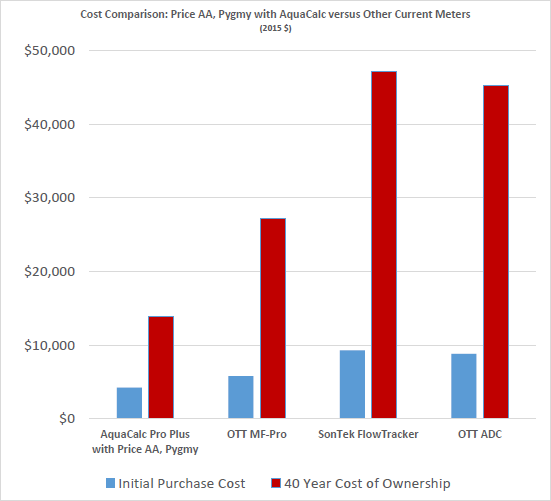 Loading... Please wait...
Loading... Please wait...Hydrological Equipment
NEWS RELEASE
Cost and Accuracy Comparisons

Mechanical Current Meter System with AquaCalc Versus Other Point Velocity Discharge Systems
Download PDF
Sample Analysis Instrumentation
Field and Laboratory Equipment
Samples for particle size analysis always require special processing and computational procedures to insure the determination of the concentration as well as the particle-size distribution with only one drying of the sediment.
Each of the several methods for determining concentration has advantages and disadvantages. The two most commonly used methods are evaporation and filtration. The filtration method may be somewhat faster than the evaporation method for samples of low concentration. However, larger quantities of sediment tend to clog the filters and inhibit the use of this method for the higher concentrations. The evaporation method requires an adjustment for dissolved solids if the dissolved solids content is high, especially for samples having low sediment concentration. Thus, the filtration method may best be used on samples ranging up to about 10,000 mg/l of sediment that is mostly sand and about 200 mg/l of sediment that is mostly clay. The evaporation method may be best used when the concentration is more than these limits.
USGS Evaporation Method
The evaporation method consists of allowing the sediment to settle to the bottom of the sample bottle, decanting the supernatant liquid, washing the sediment into an evaporating dish with distilled water, drying it in the oven, cooling it in a desiccator and weighing the dried sample. Then the dried sample is sieved on a sieve shaker.
USGS Filtration Method
The filtration method, using a 47 mm or 90 mm glass filter holder with glass-fiber filter paper disks, oil-free vacuum pump and filter flask, have proven satisfactory for filtration of most types of sediment samples. These filter disks show no weight loss during filtration, save considerable preparation time, result in more uniform filtration and make cleaning of the crucible easier than do other types of filters. However, the filter disks become clogged rather rapidly when some types of fine sediment are filtered.
USGS Bottom Withdrawal Tube
USGS Visual Accumulizer Tube - Sand Size Analyzer
The Visual Accumulation Tube method fills a fundamental need in the process of obtaining data related to sediment transport. It is a fast, economical, and accurate means of determining the size distribution in terms of the fundamental hydraulic properties of the particles and the fall velocity or fall diameter. Not only does "sieve" diameter fail to indicate the desired hydraulic properties of a sediment sample, but the particle-size distribution may be in error because of irregularities in the size and shape of sieve openings, limitations on the time of sieving required to pass all particles, and possible adhesiveness of clay on the larger particles. Therefore, the VA tube-pipet method is recommended for the determination of the particle-size distribution of sediment for most streams. The VA tube method is especially adapted for size analysis of samples composed mainly of sand.
Specific Gravity Hydrometer Method
Sedimentation methods based on the laws of Stokes and Oden are used widely to characterize particle size distribution in the 1-100 µm subsieve range. Each particle, under the action of gravity, falls at its free-settling velocity where frictional drag of the fluid medium just balances gravitational acceleration. When density among particles is the same, large particles fall faster than small ones. Therefore, time of sedimentation relates to particle diameter, and determination of distribution of percent by weight vs. equivalent diameter is possible by measurement of weight settled vs. time.
